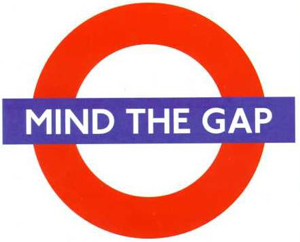The Pentagon recently asked Congress to raise military pay in 2011 by 1.4 percent. This increase would be equal to wage growth in the nation’s private sector, according to the Employment Cost Index. ECI is a measurement prepared by the US Bureau of Labor Statistics.
However, leading members of Congress balked and immediately proposed a 1.9 percent raise—a half-percentage point higher than the ECI figure. All signs are Congress will impose its will. Lawmakers say that the larger raise is needed to close a worrisome civil-military “pay gap.”
 |
|
The extra half-percent raise, if it stands, will cost taxpayers some $500 million a year. What is the pay gap, and what is its significance
The story begins in 1973 with the creation of the All-Volunteer Force. When conscription ended, DOD dramatically raised pay so as to attract high-quality personnel. Initial results were good, but soon pay began to lag again.
The results were predictable—the military couldn’t attract troops it wanted and couldn’t retain those it wished to keep. The “gap” between military and civilian pay became a major issue.
There are many different opinions about this; some even claim that it is impossible to compare the pay of two vastly different “worker” groups. Indeed, the differences are many.
For all that, though, it is possible to measure and compare some aspects of military employment. These include recruitment and retention and the relative size of annual raises.
In the late 1970s, with the nation worried about a “hollow” military force, Congress began appropriating hefty pay raises. It was a move emphasized and expanded by President Ronald Reagan. By 1982, the military was said to have achieved parity with civilian pay, and recruiting and retention soared.
Even so, military compensation, relative to civilian pay, once again began to slip, in large part because of huge growth in private sector wages. By 1993, the pay gap stood at 11.5 percent. It peaked at 13.5 percent in 1999.
In the late 1990s, recruiting and retention problems returned. The Air Force in 1999 missed its recruiting goal for the first time in 20 years. In the Army and Navy, the problem was even worse. Critics turned once again to the pay gap as the explanation.
Congress finally stepped in. From 2000 through 2004, annual military raises averaged 1.5 percent better than the ECI figure. These multiple increases, cumulatively, cut the pay gap by more than half.
Today, the pay gap as typically understood stands at 2.4 percent. A better way to view this is as a “raise gap”—measuring the cumulative differences in military and private sector raises since 1982.
It is important to note that the military’s own goal is not strict parity; it is for troops to earn in the 70th percentile (that is, to be better paid than 70 percent of comparable civilians), not to have “average” pay—or the best pay.
The Congressional Budget Office determined that military members in 2006 were actually in the 75th pay percentile. “Since then, military pay raises have continued to exceed the increases of civilian wages and salaries,” CBO officials told Congress this year.
Further, the pay gap only counts basic pay. Not included in the calculation are the value of military housing and sustenance allowances, a major portion of total military pay. By the CBO’s calculations, military pay—when housing and food allowances are factored in—has actually outpaced private-sector pay by 11 percent since 1982. RAND has also found essentially no pay gap since 1982.
What does this mean in practical terms? Including cash allowances, a 26-year-old unmarried staff sergeant with eight years of military service earns $50,708. A 42-year-old lieutenant colonel with a family of four and 20 years of service earns $125,916.
Servicemen and -women certainly need to be well paid. High quality is a nonnegotiable requirement. Troop training is long and expensive. Service members are responsible for deadly and expensive weapons. Typically, they must uproot their families and move every few years. Of course, they also deploy to war zones and can stand in daily risk of injury or death. Civilian jobs are simply different.
“Just mentioning rising [pay] costs … seems in bad taste,” notes military columnist David Wood. “Members of the armed forces risk their lives for a high ideal. Their service cannot be measured in dollars alone.”
Indeed, for recruiting and retention, as long as compensation is generally regarded as “fair,” money is not really the issue. The state of the job market is often more critical.
When the military has trouble recruiting and retaining the best personnel, it needs to pay more—even if military compensation is considered high. When personnel are not a problem, larger raises may not be necessary.
Today, so few airmen are leaving the Air Force that the service is offering voluntary separation pay, convening an early retirement board, and may begin forcing airmen out because retention is at a 15-year high.
DOD needs to pay the “market rate” to attract and retain a top-notch force. However, solving the pay gap won’t fix retention problems that don’t exist: The money could be better applied to targeted bonuses in highly stressed career fields. It is unlikely, though, that Congress will agree.
More information: http://militarypay.defense.gov/mpcalcs/calculators/RMC.aspx